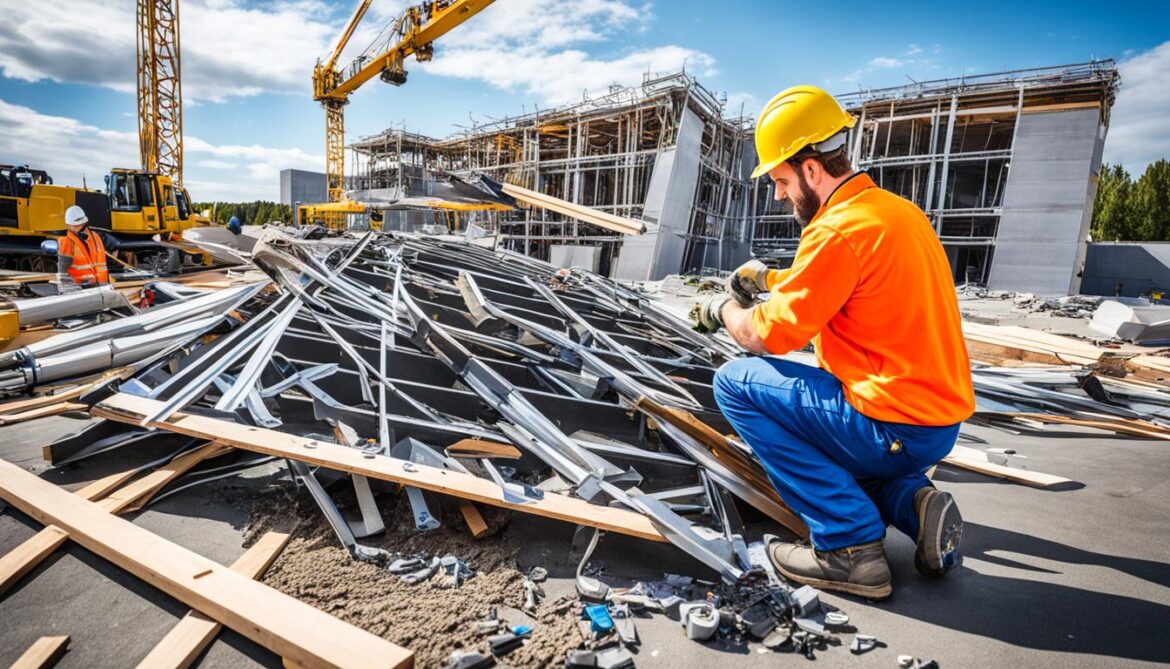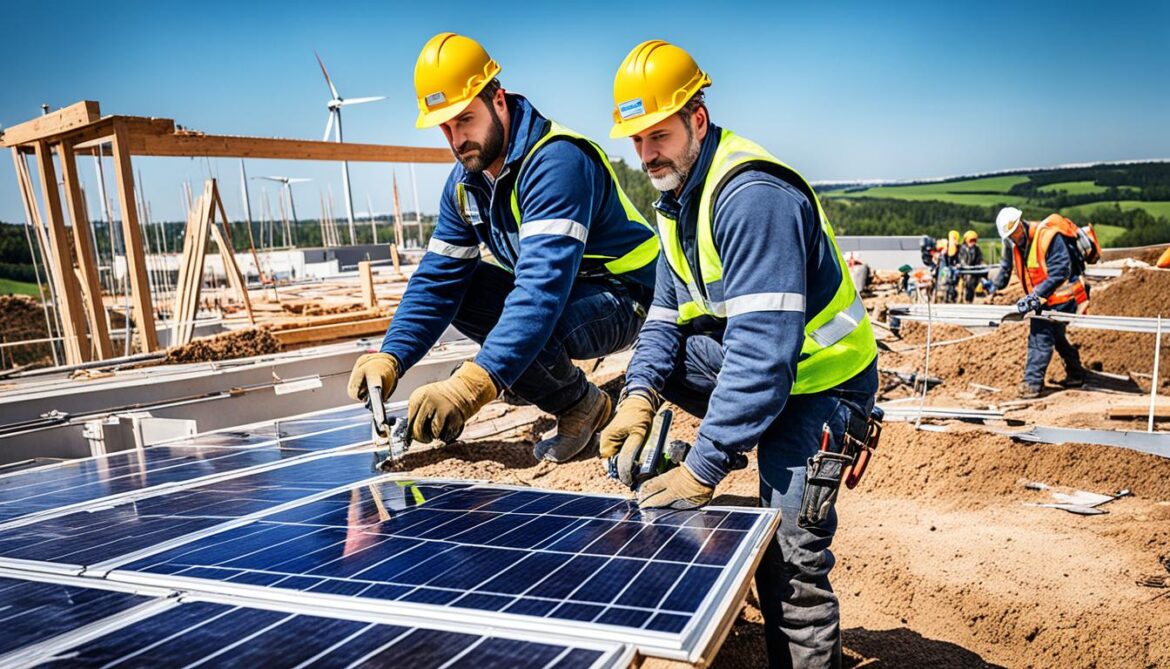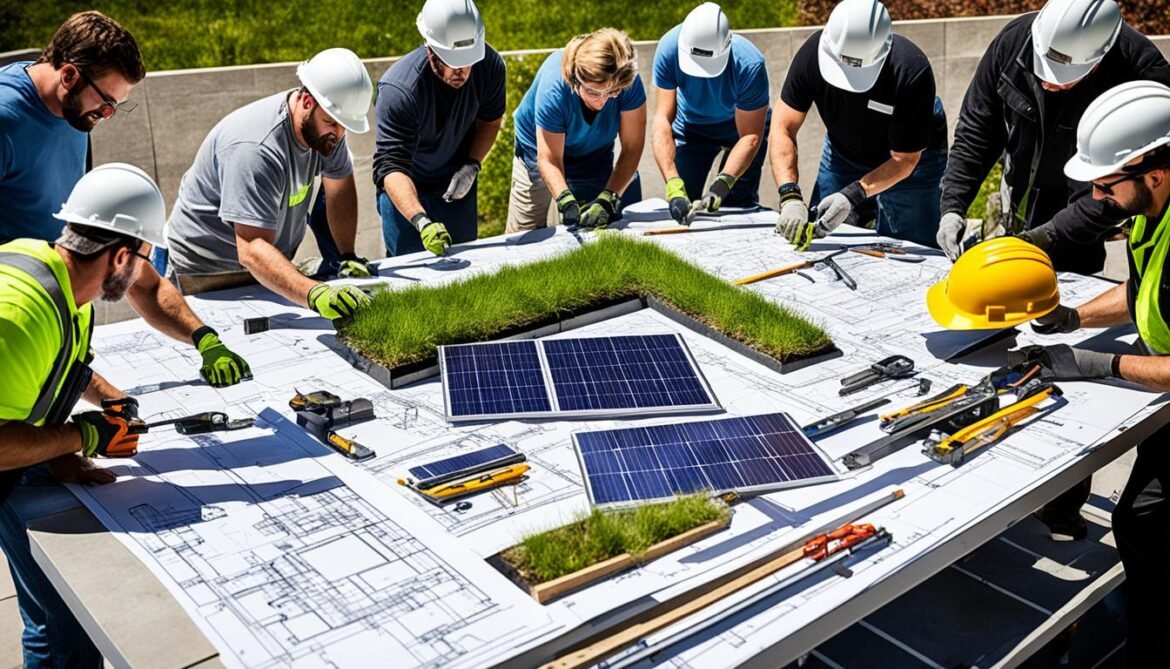The EU’s ‘right to repair’ rule and the construction industry
- Jackie De Burca
- April 29, 2024
The new Right to Repair EU rule will soon be the catalyst for a significant shift in the construction industry’s sustainability. The EU’s ‘right to repair’ rule is more than a law. It shows a strong commitment to the rights of consumers and taking care of the environment. This rule is guiding the industry towards a future where buildings are made to last longer and can be easily fixed. It will certainly encourage The Architecture of Repair. However, if you think about it relatively speaking, it wasn’t so long ago when we lived like this.
Recycling or the reuse of objects dates back tens of thousands of years. Our earliest Native American communities practiced recycling and reuse through the reworking of stone, shell, and hide and, until the Industrial Revolution, so too did nearly every country and community on earth.
Key Takeaways
- The EU’s ‘right to repair’ rule has the potential to induce a culture of sustainability within the construction industry.
- Consumer rights are receiving a major boost as repairability enters the limelight. However, the transition in the UK could be complicated due to existing leases.
- Sustainable practices will see an uptick as the industry adapts to the required changes.
- The rule is set to reduce environmental impact by advocating for repair over replacement.
- Industry stakeholders must invest in new skills and technologies to keep pace with legislation.
Understanding the EU’s ‘right to repair’ rule
The start of the EU’s ‘right to repair’ rule is a big change. It challenges us to rethink how long products should last, how consumers can take action, and how we can sustain our world. It’s a key part of EU legislation. The rule fights against the usual ‘buy-use-throw away’ pattern, leading us to a circular economy. Here, things are made to last longer, be fixed easily, and be recycled at the end.
This law is built on a clear idea. Products, like gadgets or kitchen appliances, should not break down too quickly. When they do stop working, fixing them should be simple. This rule helps buyers fix their stuff instead of just buying new things. That’s important because making new products uses lots of resources and creates waste, harming our planet.
Here’s a summary of what the rule includes:
- Products need to be designed for easy repair and upkeep.
- Everyone should get access to the parts and instructions needed for repairs.
- Products must be built in a way that allows them to be reused, upcycled, and recycled.
- Manufacturers are responsible for their products’ entire lives.
The idea behind this rule is both practical and visionary. It suggests a change in how things are made and used. This change knows our world’s sustainability issues and tries to solve them. It looks forward to a time when our gadgets and home appliances are not thrown away but fixed and kept.
Let’s look at the good this will do:
| Benefit | Description |
|---|---|
| Longevity of Products | Makes products last longer through repair, cutting down on the need to buy new ones often. |
| Reduction in Waste | Creates less trash, easing the burden on dumps and recycling centers. |
| Resource Efficiency | Helps us use what we already have better instead of needing more raw materials. |
| Consumer Empowerment | Allows people to choose fixing over buying new, leading to more eco-friendly choices. |
This change in EU rules matches the need to protect our environment with how we do business. It also sparks new ideas for making products last longer and be easier to fix. The EU is leading the way to a greener future with this policy.

Implications for Construction Industry Stakeholders
The European Union has introduced a new ‘right to repair’ law. This law is changing the construction world, urging it to focus more on sustainable consumption and making buildings and materials last longer. Companies in this field will need to make big changes. They’ll need to start offering better repair services and have more aftermarket parts available. This move will push everyone in the industry to work towards a future where things are built to last.
The Shift Towards Sustainable Consumption
This change in law aims to make us use less and save more. The idea is that both the planet and our wallets will benefit. Construction will now have to use materials that don’t just last longer but can also be fixed easily. This will force those who make and supply these materials to think about how to make them more durable. This way, we’ll end up using fewer resources and creating less waste.

Effect on Repair Services and Aftermarket Parts
As we all start focusing more on being eco-friendly, fixing things rather than throwing them away will become key. This offers a great chance for businesses that sell aftermarket parts. They can set up new ways to supply these parts and make fixing things easier. Construction companies will need to think about offering repair services. This will help make buildings and structures last longer.
Adaptations Required by Construction Firms
Construction companies play a big role in these changes. They need to start including green practices in their day-to-day work. This could mean choosing materials that are easier to fix or recycle. They might also need to teach their workers new skills focused on repairs. Looking for new, more durable materials can also show their dedication to being more sustainable.
In the end, the construction industry is at a crossroads. It’s time to blend new ideas with old practices to create a greener future. By focusing on repairs and having parts that can be replaced, we can set new standards. The choices we make now will shape how we build things in the future, aiming for a world that values nature and economic health.
EU Legislation’s Impact on Building and Home Repairs
The EU legislation changes will reshaped the construction industry, especially in building and home repairs. It promotes repairability. This encourages professionals to prefer maintenance over replacing things. This shift is good for homeowners and our planet. The way we fix buildings and homes will now change.
Now, there’s a bigger focus on making parts easy to repair right from the start. When designing new buildings, ease of repair is a must to meet EU legislation. This approach helps buildings last longer and is better for the environment.
- Greater emphasis on modularity
- Standardisation of parts, ensuring interchangeability
- Enhanced accessibility to repair documentation
With this law, the construction industry must think differently about building designs. It pushes a circular approach to building, which is better for our future.
| Aspect | Pre-Legislation | Post-Legislation |
|---|---|---|
| Design Focus | Aesthetics and Cost | Repairability and Sustainability |
| Materials Used | Standard Building Materials | Durable and Standardised Parts |
| Documentation | Minimal Repair Guides | Detailed Repair Manuals |
| Overall Impact | Higher Replacement Frequency | Cost-efficient Maintenance |
The EU’s focus on repairability will change how we see building lifecycles. It encourages the construction field to value a building’s longevity as much as its look and use. This is a key moment where a building’s worth goes beyond just its structure, touching on sustainability and thoughtful existence.
Advancing the Circular Economy through Construction
The construction sector plays a big role in growing the circular economy. It uses new and old methods to decrease waste and reuse resources. By focusing on materials recycling and using sustainable architecture, the industry is helping build a future that’s good for the planet.

Materials Recycling and Reuse
Recycling materials is key to using fewer new resources and cutting down harmful emissions. The industry should see the end of a building’s life as a chance to gather materials, not create waste. This way, each piece of material can be seen as valuable for future projects.
Innovations in Sustainable Architecture
New design ideas are important for sustainable architecture. Today, architects design buildings to be adaptable and easy to repair. They plan for a building’s end, expecting to take it apart and reuse the parts. This method helps the environment and makes buildings ready for the future.
Eco-friendly Building Practices and Certifications
Being eco-friendly improves a company’s performance and shows it cares about the planet. Getting certified with BREEAM or LEED shows a firm is serious about being green. These marks of quality tell customers and other businesses that a company leads in protecting the environment. They bring better operation and a good name.
Architectural Design and Consumer Rights
A big change is happening where architectural design meets consumer rights. It’s crucial to embrace repairable design in building. This meets the demand for sustainability and makes sure buildings last longer.

Laws are guiding this new approach, touching every type of building. This responds to the need for constructions that are easy to fix and maintain. It matters a lot to customers who care about the environment.
Incorporating Repairability into Design
Repairable design is now a key part of creating buildings. Using repair-friendly materials and methods means consumer rights are respected. Buildings will also last much longer.
Clients’ Growing Demand for Durable Constructions
People now want durable constructions more than ever. This desire shapes how architects think about their projects. They aim to make buildings that stand strong over time.
Legislation as a Driver for Quality Improvements
The EU’s ‘right to repair’ law is pushing the construction world to do better. This law ensures new buildings are durable and easy to fix. It makes long-lasting quality and beauty equally important.
So, when architectural design and consumer rights come together with legal support, we move towards buildings that are sustainable, repairable, and durable. This focus on quality improvements makes a big difference.
Environmental Impact: How Right to Repair Reduces Waste
The EU’s ‘right to repair’ rule is leading a change. It aims to lessen the harm that construction causes to the environment. This law makes builders and manufacturers think about sustainability. This drastically cuts down the waste created. It encourages fixing and refurbishing building materials, not just recycling.
The ‘right to repair’ speeds up the shift to green habits. It helps save our planet’s resources. This move matches what people now want: to live more sustainably. Reduce waste, recycle more, and reuse efficiently are guiding the industry.
- Encourages repair over replacement, thereby reducing waste
- Promotes the use of durable materials for longer lifespans of products
- Supports eco-friendly disposal and recycling of construction materials
- Advocates for sustainable consumption through conscious design choices
This rule doesn’t just cut down on waste. It also makes us think differently about how construction materials and products last. Now, things are made to be more durable from the start. They’re more useful and sustainable too.
| Sustainable Practice | Benefits |
|---|---|
| Material Recycling | Reduces raw material demand, lowers emissions |
| Modular Design | Facilitates repair, enhances adaptability |
| Long-life Materials | Extends product lifecycle, decreases waste |
| Refurbishment Over Replacement | Conserves resources, minimises disposal |
In conclusion, the EU’s ‘right to repair’ offers a smart way for construction to be less harmful to our planet. It joins the push to waste less with the aim of living more sustainably.
The Economic Viability of Repair versus Replace Decisions
In the building sector today, weighing up the economic viability of repair versus replace is vital. The EU’s ‘right to repair’ law is making firms look closely at repair costs versus new buys. This can uncover financial benefits of fixing rather than swapping out building parts.
Cost-Benefit Analysis for Repair Services
A deep dive into cost-benefit analysis tends to favour repairs. These studies consider not just the upfront costs. They also look at benefits like prolonging a component’s life and the positive environmental impact.
Influence on Long-Term Operational Expenses
Opting for repair can hugely impact operational expenses over time. Keeping components running longer means less need for replacements. This makes for a savvy strategy to keep business running costs low.
Financial Incentives and Tax Breaks for Repairs
New financial incentives and tax breaks encourage companies to repair. These benefits help reduce the immediate cost of fixes. They also support a greener and more cost-effective business strategy.
| Consideration | Repair | Replace |
|---|---|---|
| Initial Cost | Typically lower | Higher with new parts and labor |
| Longevity | Extended with quality repairs | Varies depending on new part quality |
| Impact on Operational Expenses | Reduces long-term costs | Could increase if replacements are frequent |
| Environmental Consideration | Less wasteful, promotes sustainability | Contributes to waste, may negate eco-efforts |
| Financial Support | May benefit from incentives/tax breaks | Typically not supported by policy incentives |
Choosing to repair over replacing parts is both eco-friendly and wise financially. The right to repair pushes for sustainable use. It also lays a solid base for businesses to do well financially.
New Technologies and Methods Supporting the Right to Repair
Using new technologies is key in improving the building sector’s support for the EU’s ‘right to repair’ law. These tech solutions are changing the industry. They lead a shift towards greener, more effective repair ways.
3D Printing in Spare Parts Manufacturing
3D printing is changing how we make spare parts. It lets us make parts on demand. This way, the building industry can avoid long waits, save money, and reduce repair times.
AI and IoT in Predictive Maintenance
AI and IoT work together to change how we do maintenance. They predict problems before they get worse. This helps make buildings and their parts last longer.
Blockchain for Supply Chain Transparency
Blockchain makes the supply chain clearer. It offers a secure record of transactions and material sources. This ensures repairs use the right parts, keeping construction projects sound.
| Technology | Application in Construction | Benefits |
|---|---|---|
| 3D Printing | Rapid prototyping and manufacturing of spare parts | Cost savings, customisation, reduced waste |
| AI and IoT | Smart monitoring of structures for early detection of repair needs | Enhanced lifespan of components, reduced unexpected failures |
| Blockchain | Verification of parts and maintaining transparent records | Increased trust, easier compliance with ‘right to repair’ regulations |
These new technologies match the ‘right to repair’ rule. They also promote a culture of creativity and green practices in the supply chain.
Conclusion
The EU’s ‘right to repair’ rule is a big step towards sustainable use in construction. It requires products to be made with repair and longevity in mind. This reduces the environmental harm from building works, in line with the circular economy.
This rule also boosts consumer rights. It lets people choose products wisely and keep them in good shape longer. This means saving money for both customers and companies. It’s a big move towards a future that’s good for both humans and the environment.
New technologies like 3D printing help make this rule work. They enable the construction industry to follow these new standards. The ‘right to repair’ is changing the construction world and setting an example globally. It values sustainability, efficiency, and environmental care.










Climate Change and Construction: Can They Co-Exist?
2 years ago[…] The EU’s ‘right to repair’ rule and the construction industry […]
Congo (Brazzaville) Green Building History
2 years ago[…] The EU’s ‘right to repair’ rule and the construction industry […]
United Arab Emirates Sacred Natural Sites and Biodiversity
1 year ago[…] The EU’s ‘right to repair’ rule and the construction industry […]
Eritrea Sacred Natural Sites and Biodiversity
1 year ago[…] The EU’s ‘right to repair’ rule and the construction industry […]
Exploring Vancouver's Urban Design with Alexandra Steed
10 months ago[…] time to support community place-making visions. Steed’s exceptional contributions to landscape architecture have garnered prestigious awards, including the WAFX Award for innovative global solutions and […]